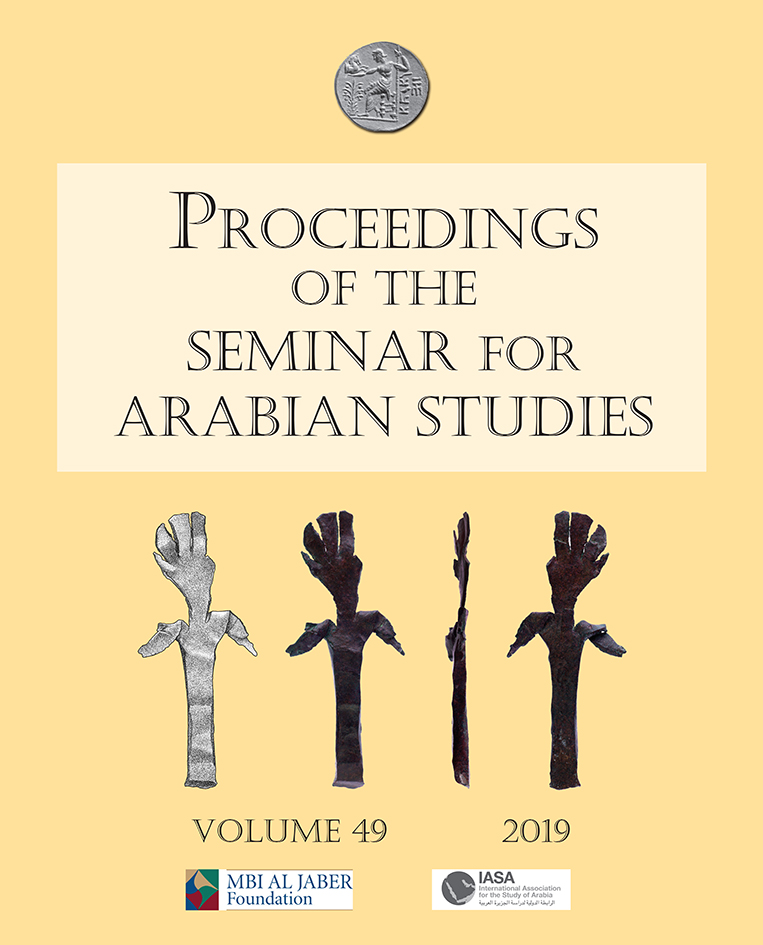The Hafit period at Al-Khashbah, Sultanate of Oman: results of four years of excavations and material studies
Keywords:
Hafit, Al-Khashbah, Towers, copper processing, OmanAbstract
Al-Khashbah, located approximately 17 km north of the modern city of Sināw, is one of the largest Early Bronze Age sites in the Sultanate of Oman. The University of Tübingen has carried out excavations at the site during the last four years (2015–2018), revealing a significant amount of Hafit-period architecture and finds, including a mud-brick complex (Building I) and a stone tower (Building V). Building I dates to around 2800 cal. BC and has provided evidence of bead and chipped stone workshops. Its layout is comparable to the contemporaneous tower at Hili 8, Phase I. Building V yielded the oldest substantial evidence of copper processing in Oman, dating to the end of the fourth millennium, around 3200 cal. BC. Thus, the archaeological record in Oman can now corroborate archaic texts from Uruk in southern Mesopotamia that mention copper objects from the Gulf. This paper presents the preliminary results of the study of the architecture, metallurgy, lithics, ground-stone tools, and anthracological material from Al-Khashbah. These diverse strands of evidence offer valuable insights into the Hafit-period economy, environment, and lifestyle at Al-Khashbah.
Downloads
Published
How to Cite
Issue
Section
License
Archaeopress Publishing, Oxford, UK


